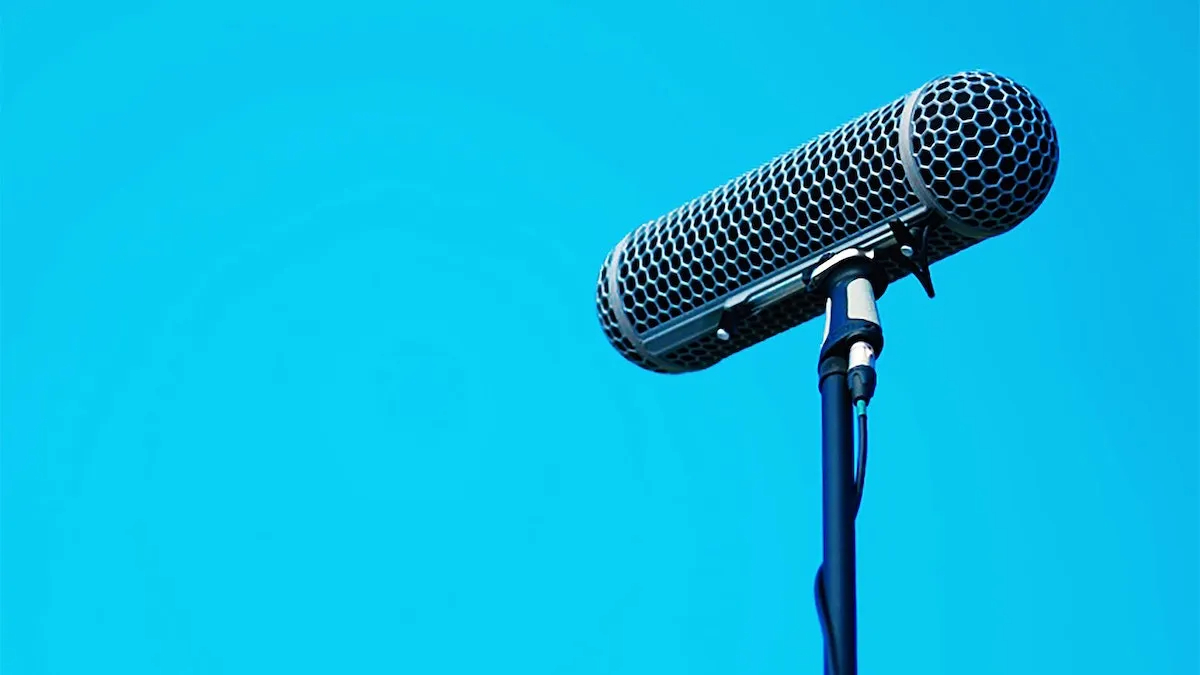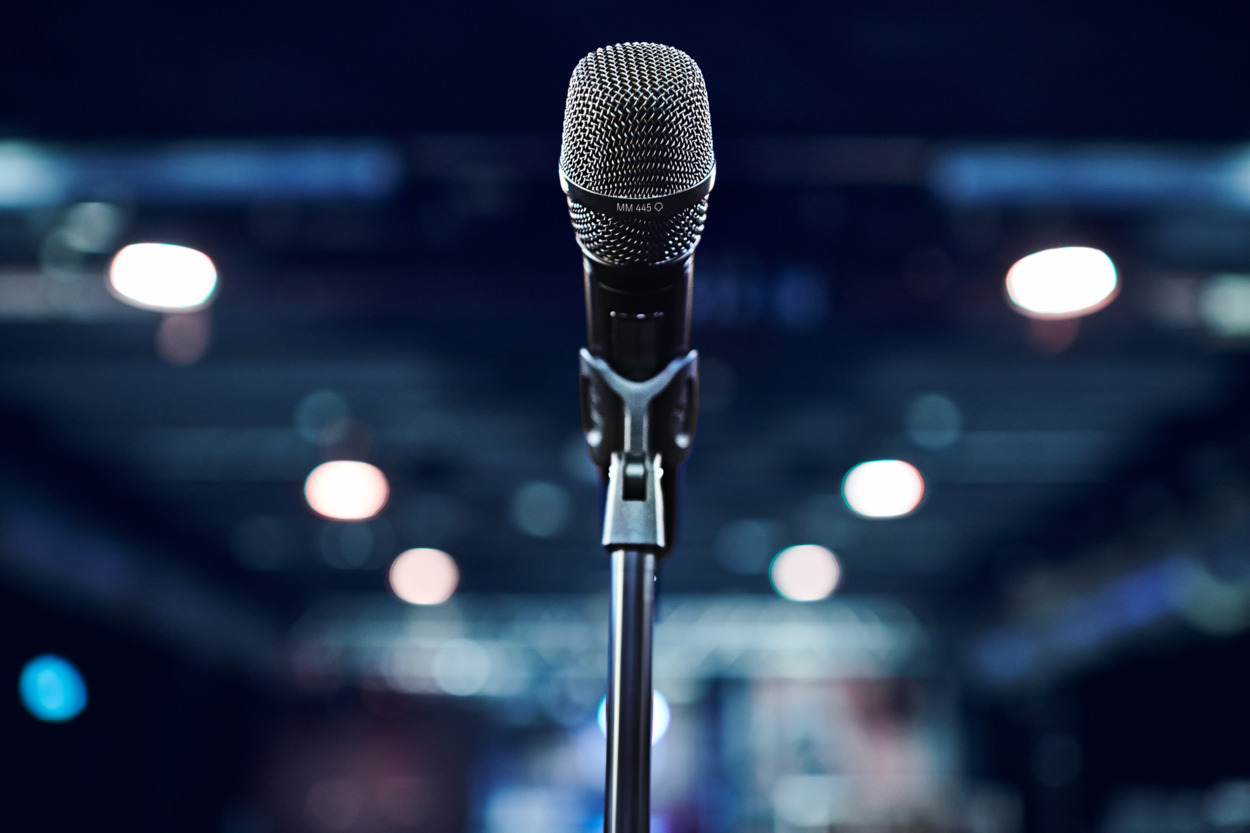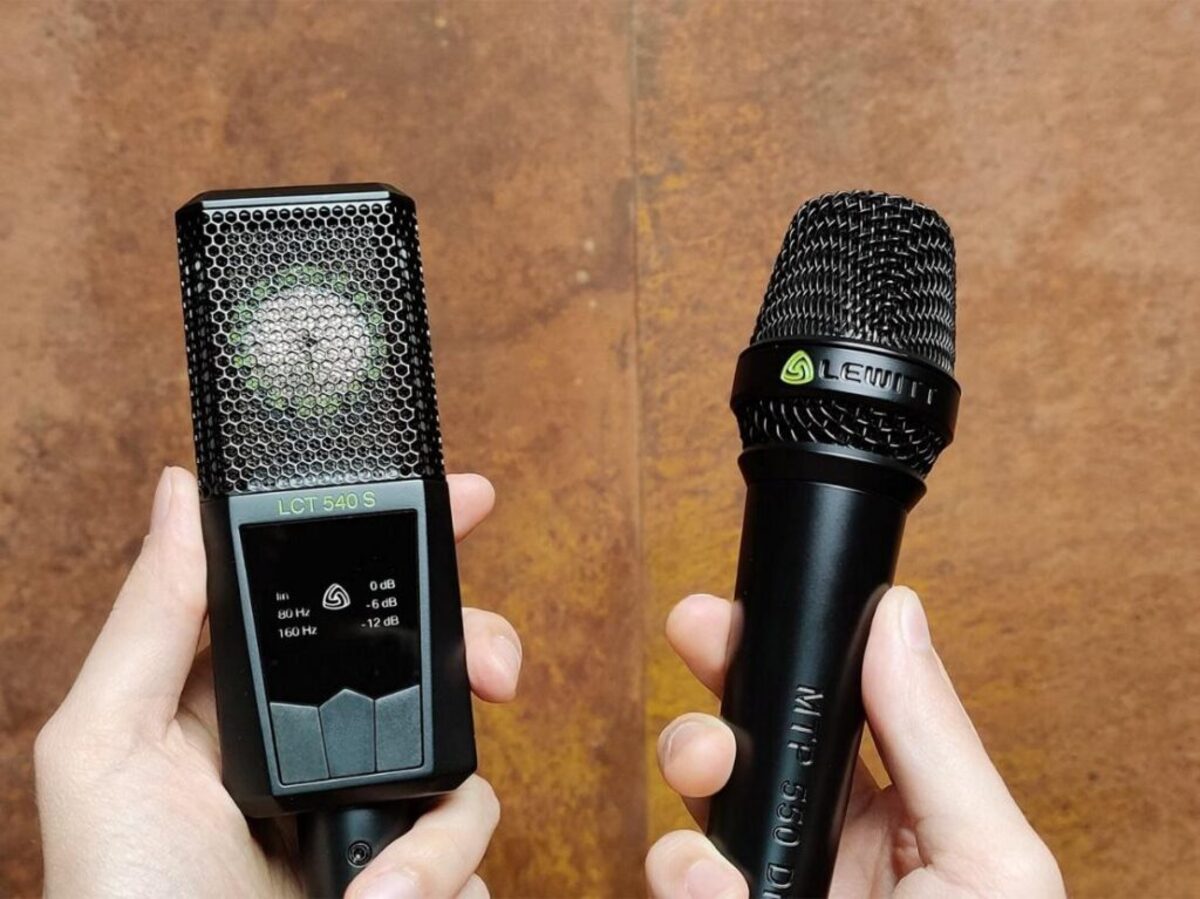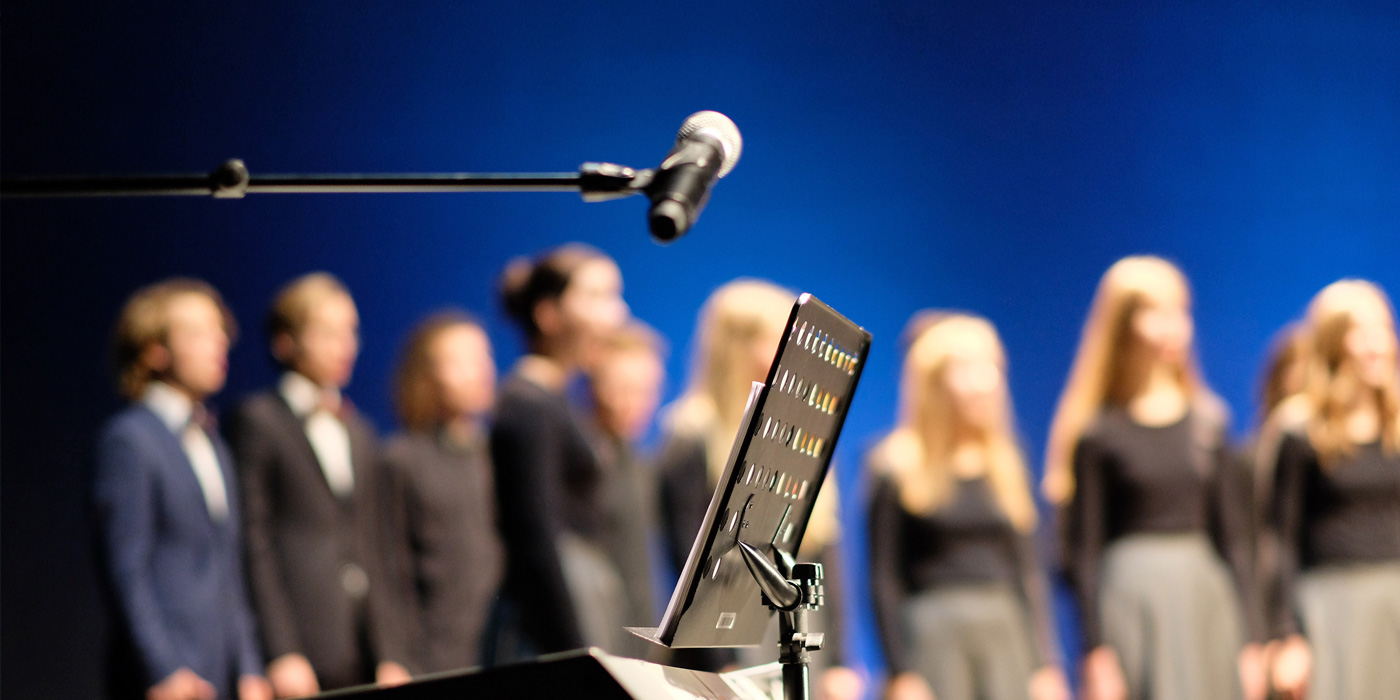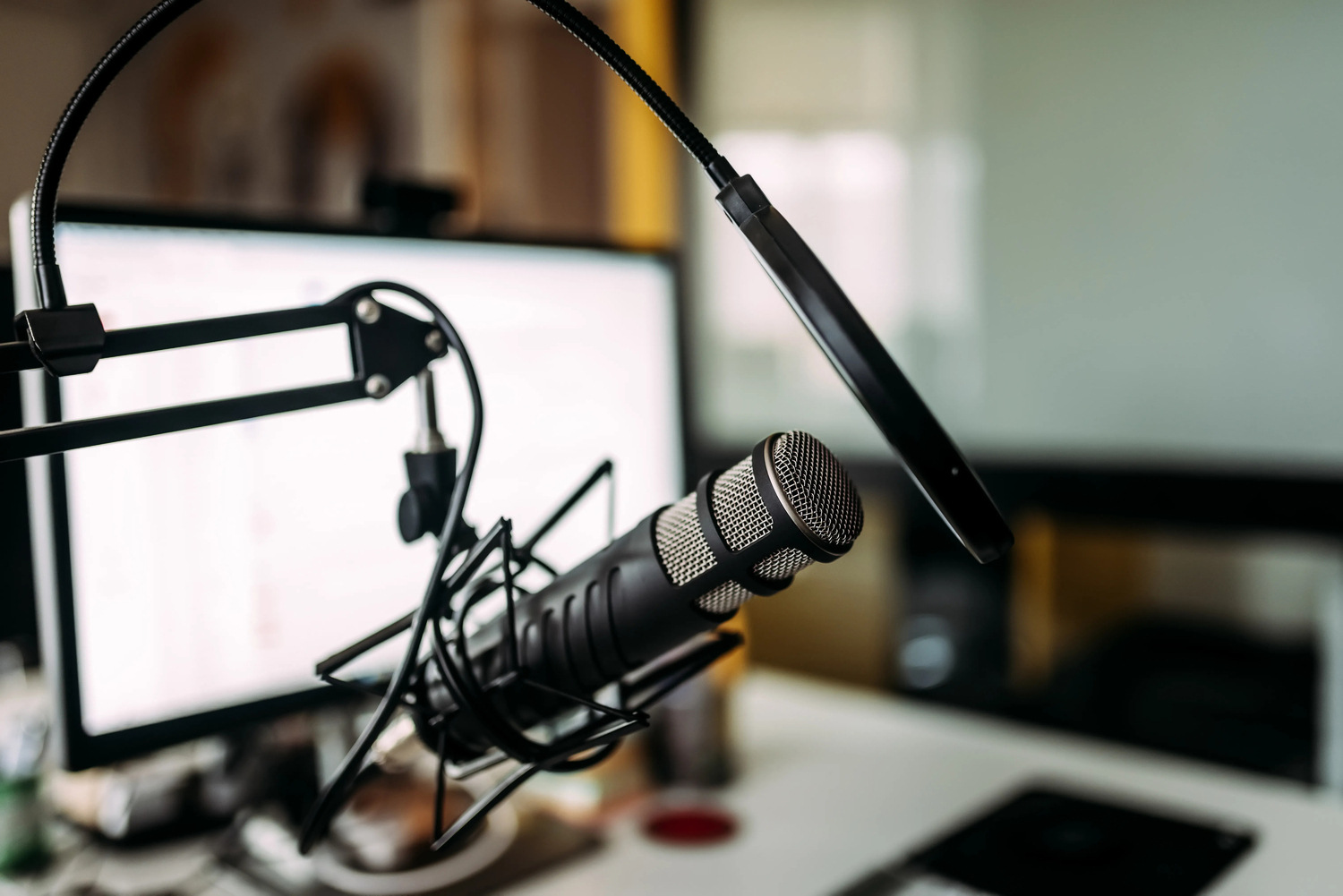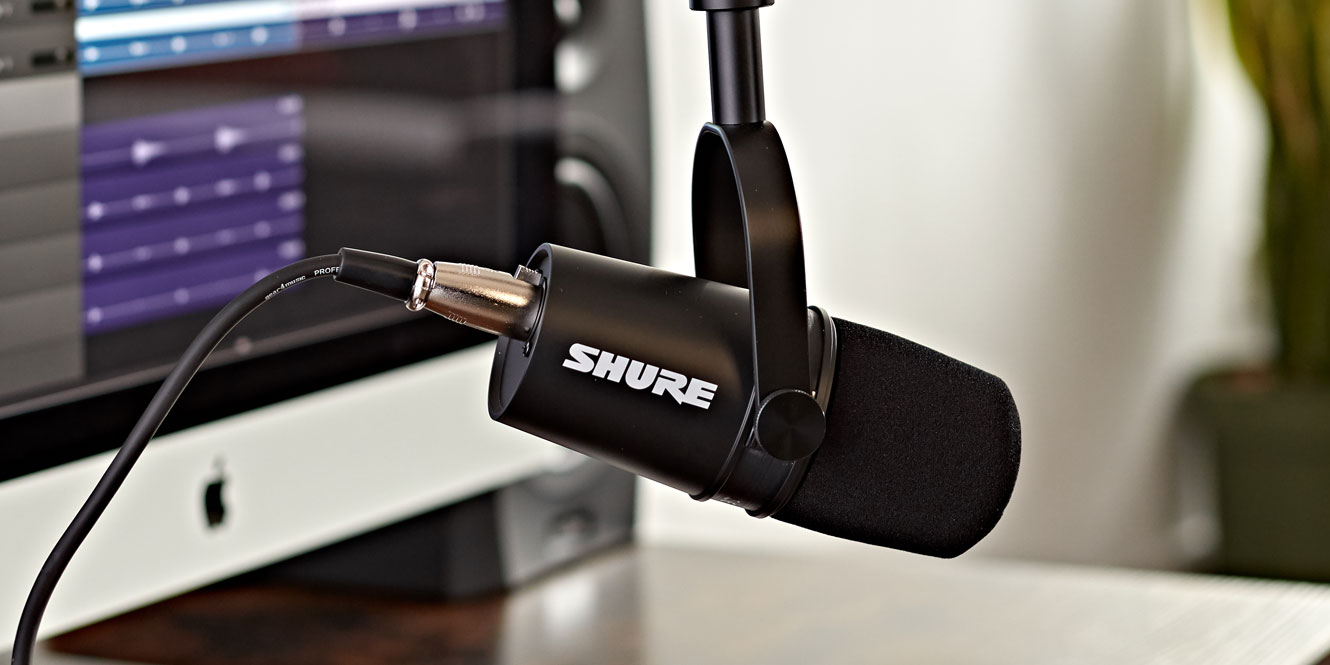Home>Devices & Equipment>Microphone>What Is Boom Microphone


Microphone
What Is Boom Microphone
Modified: February 17, 2024
Learn about the benefits and uses of boom microphones, including their application in film, television, and live performances. Find out how boom mics compare to other microphone types. Gain insights into boom microphone techniques and best practices.
(Many of the links in this article redirect to a specific reviewed product. Your purchase of these products through affiliate links helps to generate commission for AudioLover.com, at no extra cost. Learn more)
Table of Contents
Introduction
Introduction
Welcome to the fascinating world of audio technology, where the humble microphone takes center stage. In this article, we'll embark on an insightful journey into the realm of boom microphones, exploring their functionality, types, applications, and more. Whether you're an audio enthusiast, a budding filmmaker, or simply curious about the tools behind captivating soundscapes, this exploration of boom microphones is sure to pique your interest.
Boom microphones, also known as boom mics or shotgun microphones, play a pivotal role in capturing high-quality audio in a wide array of settings. From film sets to live broadcasts and beyond, these versatile devices have become indispensable tools for audio professionals and enthusiasts alike. Join us as we unravel the mysteries behind boom microphones, delving into their inner workings and shedding light on their diverse applications.
Throughout this article, we'll uncover the nuances of boom microphones, shedding light on their various types, how they function, and the advantages they offer. Additionally, we'll explore the potential drawbacks of these devices, providing a comprehensive overview that will equip you with a deeper understanding of their role in the world of audio recording.
So, without further ado, let's embark on an illuminating exploration of boom microphones, uncovering the magic that unfolds behind the scenes to capture pristine audio in a myriad of environments. Whether you're a seasoned audio professional or a curious novice, prepare to be captivated by the captivating world of boom microphones.
What Is a Boom Microphone?
A boom microphone, often referred to as a boom mic or shotgun microphone, is a highly directional microphone designed to capture audio from a specific source while minimizing ambient noise. Unlike traditional microphones that pick up sound from multiple directions, boom microphones are engineered to focus on the desired sound source, making them invaluable in environments where precise audio capture is essential.
One of the defining features of a boom microphone is its elongated, tubular structure, which allows it to be positioned close to the sound source while remaining out of the camera frame or away from the field of vision. This characteristic makes boom microphones a popular choice in film and television production, where capturing clear dialogue and ambient sounds without the microphone being visible is paramount.
Boom microphones are commonly mounted on a boom pole, a long, lightweight pole that can be maneuvered to position the microphone strategically. This setup enables sound technicians or boom operators to precisely aim the microphone at the desired sound source, whether it’s an actor delivering lines, a musical performance, or any other audio element within the scene.
These microphones are available in various configurations, including condenser and dynamic models, each offering distinct advantages in different recording scenarios. Condenser boom microphones are known for their sensitivity and ability to capture nuanced audio details, making them ideal for capturing dialogue and subtle sound effects. On the other hand, dynamic boom microphones are prized for their robustness and ability to handle high sound pressure levels, making them suitable for capturing loud sound sources without distortion.
Whether used in film and television production, live sound reinforcement, wildlife recording, or field recording, boom microphones are prized for their ability to isolate and capture targeted audio with exceptional clarity. Their versatility and precision make them indispensable tools for capturing high-quality sound in diverse settings, earning them a revered status among audio professionals and content creators.
Types of Boom Microphones
Boom microphones come in various types, each tailored to specific recording scenarios and audio capture requirements. Understanding the different types of boom microphones is essential for selecting the most suitable option for a given application. Here are some common types:
Shotgun Microphones:
Shotgun microphones, also known as interference tube microphones, are a popular choice in film and television production due to their exceptional directional capabilities. These microphones feature a long, slotted tube that enhances their ability to capture sound from a specific direction while minimizing off-axis noise. Shotgun microphones are prized for their versatility and are widely used for capturing dialogue, ambient sounds, and other audio elements on film sets and in outdoor recording environments.
Parabolic Microphones:
Parabolic microphones employ a concave dish to capture and focus sound waves onto a microphone element positioned at the dish’s focal point. These specialized microphones are often used in nature recording, sports broadcasting, and surveillance applications, where they excel at capturing distant or faint sounds with remarkable clarity. The parabolic design enables these microphones to pick up sound from a considerable distance, making them invaluable for capturing wildlife sounds, distant conversations, and other audio sources that would be challenging to capture with conventional microphones.
Boundary Microphones:
Boundary microphones, also known as pressure zone microphones (PZM), are designed to be placed on flat surfaces, such as floors, walls, or ceilings, to capture audio with a hemispherical pickup pattern. While not mounted on boom poles like traditional shotgun microphones, boundary microphones are worth mentioning due to their unique application in capturing reverberant room sounds, conference discussions, and stage performances. These microphones offer a different approach to audio capture and are commonly used in settings where traditional microphone placement may be impractical or visually obtrusive.
Each type of boom microphone offers distinct advantages and is tailored to specific recording scenarios, making it crucial to select the most suitable option based on the intended application and environmental factors.
How Boom Microphones Work
Boom microphones operate on the principles of directional audio capture and acoustic interference, leveraging their design to isolate and capture sound from specific sources while minimizing unwanted noise. Understanding the underlying mechanisms of how boom microphones work provides valuable insight into their functionality and the factors that contribute to their exceptional audio capture capabilities.
One of the key features of boom microphones is their highly directional pickup pattern, which allows them to focus on sound emanating from a specific direction while attenuating sounds from other angles. This is achieved through the use of acoustic interference tubes, slotted designs, or parabolic reflectors, depending on the microphone type. These components play a crucial role in shaping the microphone’s response to incoming sound waves, enabling it to capture targeted audio with precision.
When a sound source is positioned in front of a boom microphone, the microphone’s directional design ensures that the majority of the sound waves reaching the microphone element are from the desired source. This focused pickup pattern effectively rejects off-axis sounds, such as ambient noise or competing sources, resulting in a cleaner and more isolated audio capture. In the context of film and television production, this capability is essential for capturing clear dialogue and ambient sounds while minimizing background noise and unwanted distractions.
Another factor that contributes to the functionality of boom microphones is their ability to handle different frequencies and sound pressure levels. By employing specialized microphone elements and internal circuitry, boom microphones can accurately capture a wide range of frequencies, from subtle nuances in dialogue to dynamic sound effects and musical performances. This versatility allows them to excel in diverse recording scenarios, from capturing quiet, intimate scenes to capturing dynamic, high-energy soundscapes.
Furthermore, the maneuverability of boom poles, coupled with the microphone’s directional characteristics, empowers sound technicians or boom operators to position the microphone precisely, ensuring optimal audio capture while remaining inconspicuous in the production environment. This level of control and flexibility is instrumental in achieving the desired audio quality and spatial characteristics in various recording situations.
Overall, the intricate interplay of acoustic design, directional sensitivity, frequency response, and operator skill culminates in the remarkable functionality of boom microphones, making them indispensable tools for capturing pristine audio in a wide range of applications.
Uses of Boom Microphones
Boom microphones are utilized across diverse industries and settings, owing to their exceptional ability to capture targeted audio with precision and clarity. Their versatility and focused audio capture make them invaluable tools in numerous applications, each leveraging their unique capabilities to achieve high-quality sound recording. Here are some prominent uses of boom microphones:
Film and Television Production:
One of the most prominent applications of boom microphones is in film and television production, where they are instrumental in capturing dialogue, ambient sounds, and foley effects. Boom operators skillfully maneuver the microphones on boom poles to capture clear and nuanced audio while remaining discreetly out of the camera frame. This enables filmmakers to achieve immersive soundscapes and seamless dialogue recording, enhancing the overall production quality.
Live Sound Reinforcement:
In live sound reinforcement scenarios, such as concerts, theater productions, and public speaking events, boom microphones are employed to capture live performances and spoken word with exceptional clarity. Their directional capabilities allow sound engineers to focus on specific sound sources, such as vocalists or instruments, while minimizing background noise and stage bleed, resulting in a more defined and polished audio mix for the audience.
Wildlife Recording:
Boom microphones are utilized in wildlife recording and nature documentaries to capture the sounds of animals, natural environments, and environmental ambience. Their ability to isolate distant or faint sounds makes them invaluable for capturing wildlife vocalizations, environmental textures, and immersive natural soundscapes, providing viewers with an authentic auditory experience of the natural world.
Field Recording and Sound Design:
Sound designers and field recording enthusiasts utilize boom microphones to capture a wide range of audio elements, including environmental sounds, urban ambiences, and specific sound effects. The focused audio capture and maneuverability of boom microphones enable recording artists to capture unique sonic textures and create compelling soundscapes for various multimedia projects, including films, video games, and virtual reality experiences.
Podcast and Broadcast Production:
In podcasting and broadcast production, boom microphones are employed to capture clear and articulate vocal performances, interviews, and narrative segments. Their ability to isolate and focus on the human voice makes them ideal for capturing engaging audio content with professional-grade clarity, enhancing the listening experience for audiences across various media platforms.
These diverse applications underscore the versatility and indispensability of boom microphones in capturing high-quality audio across a spectrum of creative and technical endeavors, enriching the sonic landscape of visual media, live events, and immersive storytelling.
Advantages and Disadvantages
Advantages
Boom microphones offer several key advantages that contribute to their widespread use and acclaim in the realm of audio recording and production. Some of the notable advantages include:
- Directional Audio Capture: The highly directional nature of boom microphones allows for precise audio capture, enabling sound professionals to focus on specific sources while minimizing ambient noise and off-axis sounds.
- Discreet Positioning: Boom microphones can be strategically positioned out of the camera frame or away from the field of vision, making them ideal for capturing clear dialogue and ambient sounds without being obtrusive in visual productions.
- Versatility: Boom microphones are versatile tools that excel in capturing a wide range of audio elements, from dialogue and vocal performances to environmental sounds and live performances, making them invaluable across diverse recording scenarios.
- Precision and Control: The maneuverability of boom poles and the focused pickup pattern of boom microphones provide operators with precise control over audio capture, ensuring optimal sound quality and spatial characteristics in various recording environments.
- Professional-Grade Audio Quality: Boom microphones are prized for their ability to capture high-quality audio with exceptional clarity and detail, contributing to immersive soundscapes and polished audio productions.
Disadvantages
While boom microphones offer numerous advantages, they also present certain limitations and challenges that should be taken into consideration:
- Operator Skill and Training: Effective operation of boom microphones requires skill and training to achieve optimal audio capture, as the positioning and movement of the microphone play a critical role in achieving desired results.
- Physical Demands: Holding and maneuvering a boom pole for extended periods can be physically demanding, requiring strength, endurance, and precision to maintain consistent and steady microphone positioning.
- Environmental Limitations: Outdoor recording environments, such as windy or noisy settings, can present challenges for boom microphone operation, as they may be susceptible to wind noise and unwanted environmental interference.
- Visual Intrusion: In certain production scenarios, the presence of a boom microphone, even when positioned discreetly, may be visually intrusive or challenging to conceal, potentially impacting the aesthetic presentation of the production.
- Complexity of Setup: Integrating boom microphones into production setups requires careful planning and coordination to ensure seamless integration with other audio equipment and production elements.
By weighing the advantages and disadvantages of boom microphones, audio professionals and content creators can make informed decisions regarding their suitability for specific recording scenarios, leveraging their strengths while mitigating potential challenges to achieve exceptional audio results.
Conclusion
As we conclude our exploration of boom microphones, we are left with a profound appreciation for the pivotal role these devices play in the realm of audio recording and production. From the intricacies of their design to their diverse applications and inherent advantages, boom microphones stand as indispensable tools that shape the sonic landscapes of visual media, live events, and immersive storytelling.
Through their highly directional audio capture, discreet positioning, and versatility, boom microphones empower sound professionals to capture targeted audio with precision and clarity, enriching the auditory experiences of audiences across various mediums. Whether on film sets, in live performance venues, amidst natural environments, or within the realms of podcasting and broadcasting, the impact of boom microphones reverberates through the artistry and technical finesse of audio production.
While they offer remarkable advantages, it is essential to acknowledge the challenges and limitations inherent in their operation, from the demands of operator skill and physical endurance to environmental considerations and visual integration. By understanding and navigating these complexities, audio professionals harness the full potential of boom microphones, leveraging their strengths while mitigating potential obstacles to achieve exceptional sound recording and production quality.
As technology continues to evolve and creative boundaries are pushed ever further, the enduring relevance of boom microphones stands as a testament to their enduring legacy in the audio industry. Their ability to capture the nuances of human expression, the grandeur of natural soundscapes, and the energy of live performances ensures that they remain indispensable tools for those who seek to elevate the art of audio storytelling and production.
In essence, the world of boom microphones is a testament to the marriage of precision engineering, artistic vision, and technical expertise, converging to shape the sonic tapestries that captivate and immerse audiences in the power of sound. As we look to the future of audio recording and production, the enduring presence of boom microphones serves as a reminder of their enduring relevance and the profound impact they continue to wield in the realms of creativity, entertainment, and immersive storytelling.

